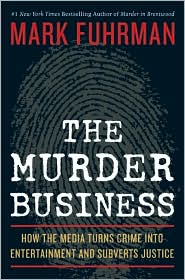S-R Editor Steve Smith has a number of endearing euphemisms he has used to marginalize those who would argue that RPS was a fraud on the public treasury. Mr. Smith has banned me from all S-R blogs:
We are under no obligation to provide space to someone who flatly and without the least bit of evidence, disregarding the laws of fairness, decency and common sense, accuses our owners of manslaughter, arson and murder and the rest of us of being accessories.
Your lunatic-fringe rants and baseless conspiracy theories don’t belong here. You will claim censorship. Hogwash. You can peddle your nonsense wherever you like. Just not here.
I find it interesting that the Inlander found these words to describe Tim Connor and Larry Shook of Camas Magazine in describing them in commissioning a report on the Spokane incinerator project (previous post):
Larry Shook is the former co-publisher and editor of Spokane Magazine. A veteran journalist and editor, his reporting has appeared in The New York Times, Newsweek and The Washington Post, among other publications. Shook has written major investigative articles on Hanford, pesticides, forestry, the Columbia Basin Irrigation Project and efforts to protect Spokane area groundwater and lakes. He is the author of three books and the winner of a National Book Award.
Tim Connor is a veteran public interest researcher who specializes in environmental health issues. A former associate editor at Spokane Magazine, his reporting has appeared in a variety of national and regional publications, including The Oregonian, The Bulletin of Atomic Scientists and the Atlanta Constitution. Since 1992, he has been a member of the U.S. Centers for Disease Control and Prevention’s National Advisory Committee on Radiation Research. He is the author of Burdens of Proof, a 1997 report examining scientific and social issues associated with health studies on populations exposed to environmental pollution.
Shook and Connor are best known for their investigative reporting in the early-1980s focusing on plutonium production at the Hanford Nuclear Reservation – work that ultimately led to the 1986 disclosure that Hanford facilities released radiation into the air in the 1940s and ‘50s.
Shook and Connor were commissioned by the Northwest Environmental Education Foundation (NEEF) to study Spokane’s waste-to-energy plant. In the name of public awareness, The Inlander approached NEEF and offered to publish its complete, 12,000+-word report – an offer the NEEF Board accepted. The Inlander, which has offered the City of Spokane space in next week’s edition to respond to the findings of this report, plans to follow up on this story in the coming weeks with its own reporting.
Ron the Cop


[…] Mr. Smith It was refreshing for once you chose not to use your normal terms of endearment e.g, wackaloons, nutsos, crazies, and little green men, in referring to others and me who have contrary opinions to yours regarding the Cowles Co & RPS […]